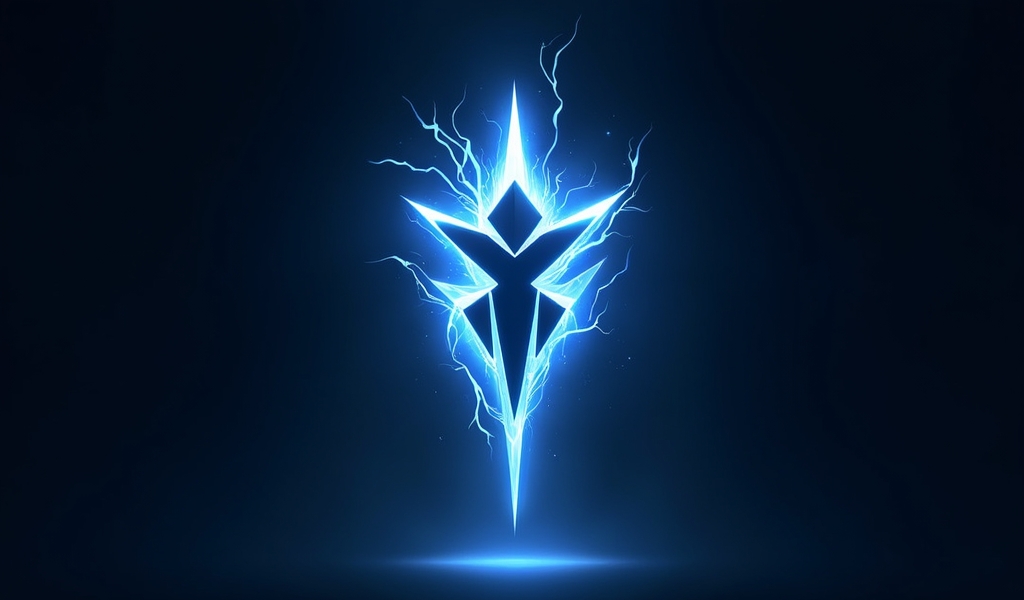Overview
How to play Xerath effectively requires mastering positioning, skillshot mechanics, and strategic vision control while maintaining safe distance from threats. His artillery mage playstyle rewards precision and patience, enabling devastating poke damage and zone control that can dominate the mid lane when executed with proper build paths and teamfight awareness.
Table of Contents
Introduction to Xerath: Master of Arcane Magic
Learning how to play Xerath effectively can transform your mid lane experience in League of Legends. As one of the game’s premier artillery mages, Xerath offers incredible range, devastating poke damage, and game-changing zone control that can frustrate even the most skilled opponents. His unique playstyle rewards precision, patience, and proper positioning—skills that will elevate your overall gameplay beyond just mastering this champion.
Xerath’s strength lies in his ability to control the battlefield from a safe distance, making him an excellent pick for players who enjoy a strategic approach to mid lane dominance. Whether you’re a beginner looking to expand your champion pool or an experienced player seeking to add a powerful mage to your arsenal, understanding how to play Xerath can significantly impact your climbing potential.
In this comprehensive guide, we’ll explore five essential tips that will help you master Xerath and dominate the mid lane. From positioning fundamentals to advanced team fighting tactics, you’ll discover everything you need to unleash the full potential of this arcane artillery mage. Let’s dive into the core strategies that will transform you into a Xerath main that opponents will fear facing in the lane.
Tip #1: Perfect Your Positioning with Xerath
When learning how to play Xerath effectively, positioning is absolutely crucial. Unlike mobile assassins or bruisers, Xerath lacks escape mechanisms, making proper positioning your primary defense and offensive tool. The golden rule: stay at the maximum range of your abilities whenever possible.
Your primary goal is to maintain distance from enemies while still being able to land your spells. This balance requires constant awareness of enemy threat ranges and potential engage paths. Position yourself near walls or behind your frontline to minimize risk while maximizing damage output.
Xerath’s passive, Mana Surge, encourages occasional approaches to auto-attack enemies after casting spells. However, only do this when it’s absolutely safe—usually during the laning phase when you can track the enemy jungler. In team fights, prioritize staying alive over proccing your passive unless you’re completely certain it’s safe.
Learn to use terrain to your advantage. Casting over walls allows you to harass enemies with minimal counterplay potential. This is particularly effective when contesting objectives like Dragon or Baron, where your team can create a chokepoint and you can safely bombard enemies from afar.
Additionally, practice using Xerath’s E (Shocking Orb) defensively. This stun is your primary self-peel tool, so save it for when assassins or divers attempt to close the gap. Pairing it with your W (Eye of Destruction) for the slow effect creates a powerful zone that discourages enemies from pursuing you further.
For low elo players looking to improve, focus on practicing “kiting backward”—moving away from threats while casting spells. This fundamental skill will drastically improve your Xerath gameplay and survivability in teamfights.

Tip #2: Master Xerath’s Skillshot Mechanics
Xerath’s power is entirely dependent on skillshot accuracy. Learning how to play Xerath means committing to mastering his unique spell mechanics. Each of his abilities requires different aiming techniques and predictions to maximize effectiveness.
Let’s break down each ability and how to land them consistently:
- Q (Arcanopulse): This is your bread-and-butter ability. Practice charging it to different lengths depending on the situation. For maximum range shots, aim slightly ahead of where enemies are moving. Remember that enemies will often change direction when they see you charging, so mix up your timing to catch them off guard.
- W (Eye of Destruction): This ability has a slight delay before impact. Use it to slow enemies before landing your E, or place it where enemies are forced to walk through during retreats or chases. The center deals more damage, so precision is rewarded.
- E (Shocking Orb): Your key stun ability travels at a medium speed. Against mobile opponents, try to cast it when they’ve just used a movement ability or are locked in an animation. The stun duration increases with distance traveled, so landing max-range Es creates longer windows for your follow-up damage.
- R (Rite of the Arcane): This ultimate requires careful targeting across multiple shots. Use the first shot to gauge enemy movement patterns, then adjust subsequent shots accordingly. Consider using it to zone enemies away from objectives even if you don’t land direct hits.
To improve accuracy, focus on learning enemy movement patterns. Most players have predictable dodging habits—some always dodge backward, others to the side. After a few exchanges, you’ll notice these patterns and can adjust your aim accordingly.
Practice tool is your best friend for mastering these mechanics. Spend 10-15 minutes before your ranked sessions practicing landing skills on the practice dummies, especially your Q at various charge levels. This consistent practice with Xerath’s kit will build muscle memory that translates to more landed skillshots in real games.
Remember that mid lane specialists focus heavily on skillshot accuracy, as it’s the primary differentiator between average and exceptional mage players.
Tip #3: Optimize Your Build Path
To truly understand how to play Xerath effectively, you need to optimize your build path based on game circumstances. While Xerath’s core identity as a long-range mage remains constant, your item choices should adapt to enemy team composition and game state.
The standard core build for Xerath typically includes:
- Luden’s Tempest: This should almost always be your first item purchase. The burst damage, mana, ability haste, and magic penetration synergize perfectly with Xerath’s poke-oriented playstyle. The movement speed proc also helps with repositioning between spell casts.
- Sorcerer’s Shoes: Magic penetration boots amplify your damage significantly, especially against targets without heavy magic resistance. Purchase these early to maximize your mid-game damage potential.
- Shadowflame or Horizon Focus: Shadowflame provides strong magic penetration against targets with shields or low health, while Horizon Focus amplifies damage against targets hit by your CC or long-range abilities—both perfect complements to Xerath’s kit.
From there, situational items become crucial:
- Against healing-heavy teams, prioritize Morellonomicon to apply Grievous Wounds with your area damage. Against tanky compositions, Void Staff becomes necessary to cut through magic resistance. If you need survivability against assassins, consider Zhonya’s Hourglass for the active stasis effect.
- Rabadon’s Deathcap remains a powerful late-game option to maximize your damage output, while Cosmic Drive can provide additional ability haste and movement speed for better kiting potential. Against heavy engage compositions, Banshee’s Veil can prevent crucial CC that would otherwise lead to your demise.
For runes, Arcane Comet synergizes perfectly with your poke-oriented playstyle. Pair it with Manaflow Band, Transcendence, and Scorch for maximum laning pressure. In the secondary tree, consider either Inspiration for biscuits and time warp tonic (sustain) or Domination for Taste of Blood and Ultimate Hunter (damage and ultimate cooldown).
According to professional player builds, adaptability in your item path based on game state is crucial for maximizing Xerath’s impact. Don’t blindly follow the same build every game—analyze the enemy team and adjust accordingly.
Working with an online LoL coach can help you refine these decisions for your specific playstyle and the current meta.
Tip #4: Map Control and Vision Dominance
Mastering how to play Xerath extends beyond mechanical skill—it requires exceptional map awareness and vision control. As an immobile mage, information becomes your greatest defense against ganks and flanks that could otherwise spell your doom.
Prioritize warding key areas around mid lane. The river entrances and pixel brushes should be your primary focus early game. As you transition to mid-game, deep wards in the enemy jungle provide crucial information about roaming threats. Always carry a control ward and place it strategically to deny enemy vision in areas where you plan to set up.
Xerath excels at wave clear, which creates opportunities for vision establishment. After shoving a wave, use that time advantage to place wards or coordinate with your jungler to secure Scuttle Crab or invade the enemy jungle. This proactive approach to vision creates a safety net that enables your aggressive poke playstyle.
Learn to use Xerath’s ultimate for information gathering as well as damage. Rite of the Arcane can check brushes, reveal potential ambushes, and provide vision during objective setups. This multifunctional use of your ultimate can save your team from dangerous face-checks and create pick opportunities.
When paired with Blue Trinket (which you should upgrade to at level 9), your vision control capabilities become exceptional. Use these tools to create a protected zone where you can safely unleash your artillery from distance without fear of surprise engages.
Improving your laning phase means understanding the relationship between vision and aggressive positioning. The more information you have, the further forward you can safely position to zone enemies away from farm and experience.
Track the enemy jungler obsessively. When they show on the opposite side of the map, you can position more aggressively. When they’re missing, respect their potential presence by playing further back or near your warded side. This jungle tracking awareness is what separates good Xerath players from great ones.

Tip #5: Team Fighting as Xerath
Team fighting as Xerath requires a different mindset compared to most mid laners. Your primary objective isn’t to dive the backline or secure kills directly—it’s to create space, soften targets, and control zones that force enemies into disadvantageous positions.
Position yourself on the periphery of team fights, ideally behind walls or your frontline. Your extreme range allows you to contribute meaningful damage without exposing yourself to direct threats. Remember, you can’t deal damage if you’re dead, so prioritize survival over aggressive plays.
Before major objectives like Dragon or Baron, use your poke to whittle down enemy health bars. Landing just a few Q and W combinations can force enemies to back off or contest with a significant health disadvantage. This pre-fight damage is one of Xerath’s greatest strengths and should be leveraged consistently.
During the actual team fight, focus your damage on priority targets when safe, but don’t hesitate to hit frontliners if they’re your only available target. Xerath’s percent magic penetration from items like Void Staff makes him effective against tanks too. Apply constant pressure rather than holding abilities too long looking for perfect shots.
Learn to layer your crowd control with teammates. Your E stun followed by W slow creates windows for your allies to follow up. Similarly, when teammates land CC, be ready to chain your abilities for guaranteed damage. This coordination multiplies Xerath’s effectiveness in organized play.
Use your ultimate strategically during team fights. Optimal scenarios include:
- When enemies are engaged with your frontline and have limited dodging capability
- During objective standoffs where enemies are corralled into predictable positions
- To finish retreating enemies after the main fight has dispersed
- To zone enemies away from critical areas during objective takes
Remember that professional LoL coaching often emphasizes positioning over pure mechanical skill for artillery mages like Xerath. Your ability to remain safe while outputting consistent damage ultimately provides more value than high-risk plays that may result in your death.
A key mindset shift for mastering how to play Xerath in team fights is understanding that consistent damage over time outweighs burst in most scenarios. Your job is to be a constant threat that enemies cannot ignore but also cannot easily reach.
Conclusion
Mastering how to play Xerath opens up a world of strategic depth and satisfying gameplay that few other champions can match. His artillery mage playstyle rewards patience, precision, and positional awareness—skills that translate well across many aspects of League of Legends.
By implementing the five essential tips we’ve covered—perfecting your positioning, mastering skillshot mechanics, optimizing your build path, establishing vision control, and executing team fights strategically—you’ll be well on your way to dominating the mid lane with this powerful mage.
Remember that improvement with Xerath comes gradually. His high skill ceiling means there’s always room to refine your play, whether that’s landing more consistent skillshots, making better macro decisions, or finding the perfect angles for your ultimate. Don’t be discouraged by initial challenges—each game provides valuable learning opportunities.
Consider seeking personalized League of Legends coaching if you’re serious about accelerating your growth with Xerath. A coach can identify specific areas for improvement in your gameplay and provide tailored advice that generic guides can’t offer.
With dedication to practice and a strategic mindset, you’ll soon find yourself controlling the pace of games, forcing enemies to respect your zone control, and carrying your team to victory with Xerath’s devastating long-range arsenal. The journey to mastery is challenging but incredibly rewarding—now go forth and unleash your arcane power on the Rift!
Frequently Asked Questions
Is Xerath good for beginners in League of Legends?
Xerath can be challenging for absolute beginners due to his reliance on skillshots and positioning. However, he’s excellent for learning fundamental mage concepts like spacing, skillshot prediction, and map awareness.
How do I deal with assassins when playing Xerath?
Against assassins, take Exhaust, rush Zhonya’s Hourglass, and focus on safe farming with your long-range Q. Save your E stun for when they dive you, and communicate with your jungler to help counter their aggression.
What are Xerath’s biggest weaknesses?
Xerath’s main weaknesses are his immobility, vulnerability to gap closers, and reliance on skillshots. Champions with high mobility or dive potential can punish him severely if he mispositions.
Should I roam as Xerath or stay mid?
Xerath isn’t a natural roamer due to his lack of mobility, but he can impact side lanes with his ultimate. Focus on pushing waves quickly, then looking for ultimate opportunities rather than physically roaming unless absolutely necessary.
What summoner spells work best with Xerath?
Flash is mandatory on Xerath for positioning and escape. For your second spell, Barrier provides good protection against burst, Cleanse helps against heavy CC teams, and Exhaust is excellent against assassins or divers.




